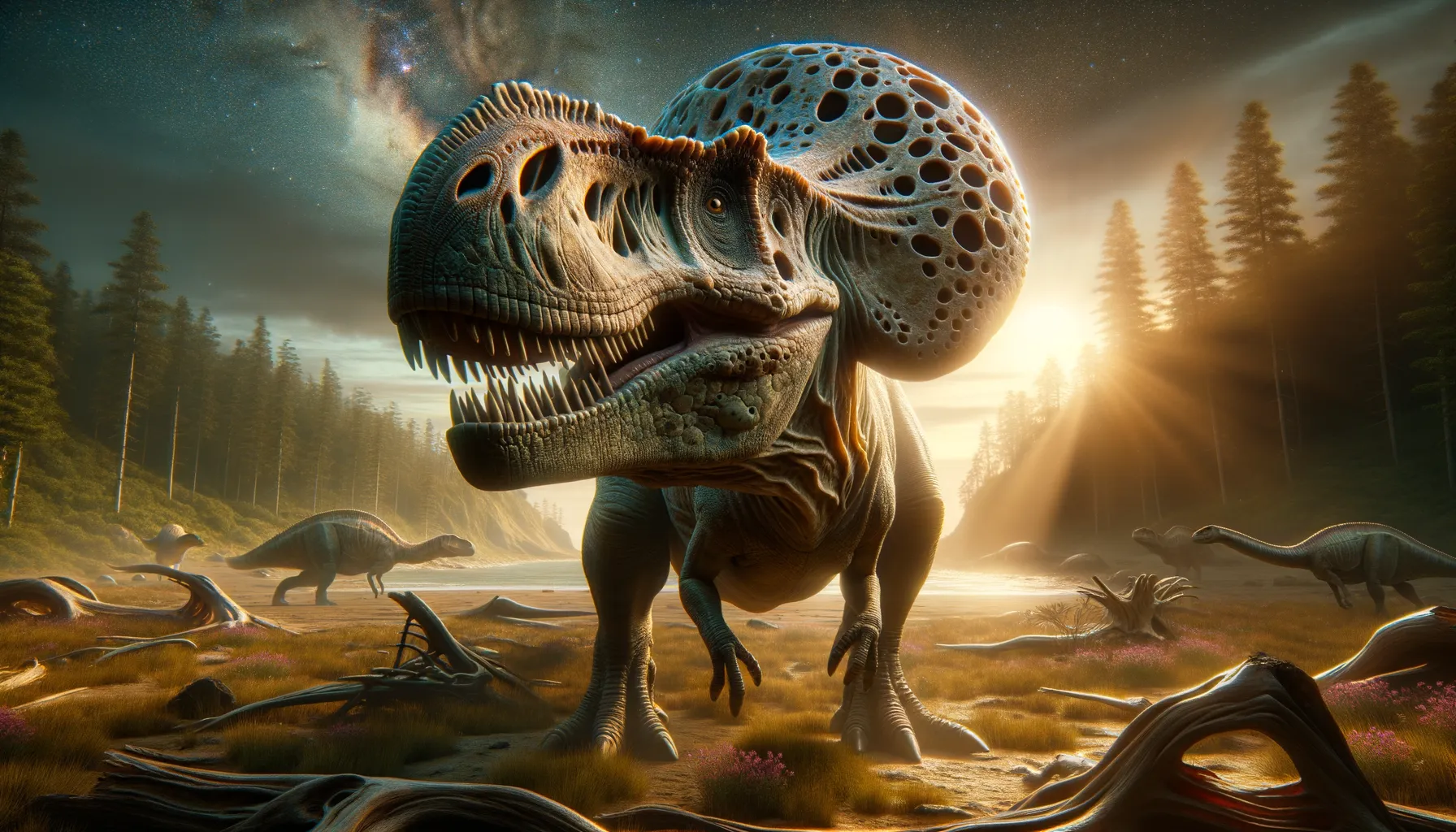
Prenocephale
Dome-headed defender of the late Cretaceous.
Period
Cretaceous
Length
Roughly 2.5 meters long.
Height
About 1 meter tall at the hip.
Weight
Approximately 130 kilograms (around 287 pounds).
Prenocephale was a dome-headed dinosaur known for its thick, bony skull. This herbivorous dinosaur roamed the Earth during the late Cretaceous period, approximately 70 million years ago. Its fossilized remains offer insight into its unique characteristics and way of life. Paleontologists believe that its dome-shaped skull could resist impacts and may have been used for head-butting behavior, helping to establish dominance or in mating displays.
Diet
Prenocephale was herbivorous, feeding on plants. It likely grazed on low-lying vegetation and may have used its beak to nip at tougher plant material. Its diet would have consisted mainly of ferns, cycads, and possibly fruits.
Hunting
As a plant-eater, Prenocephale did not hunt. Instead, it would have lived in areas abundant in vegetation, carefully selecting its food to sustain its energy. It likely browsed in groups to improve foraging efficiency.
Environmental challenges
Prenocephale faced various environmental challenges, such as avoiding predators like the theropods that roamed the same regions. Its thick skull provided some defense against attacks. Climatic variations might have impacted its habitat, requiring adaptation to occasional temperature changes and altering food availability. It likely needed to migrate in response to these environmental shifts.
Speed
Likely not very fast, as it relied more on defense.
Lifespan
Exact lifespan unknown, but possibly several decades.
First discovery
Discovered in Mongolia in the 1970s.
Fun Facts
- Prenocephale was a small herbivorous dinosaur that lived during the Late Cretaceous period.
- The name 'Prenocephale' means 'sloping head,' which refers to its thick, dome-shaped skull.
- It's believed that Prenocephale used its strong skull to engage in head-butting contests, possibly for territory or mates.
- Prenocephale measured about 2 to 2.5 meters long, which is roughly the size of a large turkey.
- Fossils of Prenocephale have primarily been found in Mongolia, offering clues about its habitat and lifestyle.
- Prenocephale likely moved in herds, providing protection against predators that roamed during its time.
- Despite its tough-looking head, Prenocephale probably munched on soft plants and fruits.
Growth and Development
Prenocephale likely experienced a relatively fast growth rate, reaching maturity within a few years. Fossils show changes in skull shape as they aged, indicating that younger individuals had flatter domes that became more pronounced over time. This suggests that skull morphology played an essential role in social interactions, with adults displaying more developed cranial structures.
Habitat
Prenocephale inhabited forested areas and open plains that provided ample vegetation. These environments were rich in ferns and low-lying plants, suiting their dietary needs. It is believed to have preferred environments with seasonal variations, as indicated by plant fossils found in the same layers as its remains. Living in herds may have offered protection against predators in these open landscapes.
Interaction with other species
Prenocephale's social interactions were likely complex, particularly with its peers during mating seasons. Head-butting contests may have been a form of non-lethal combat to establish dominance or access to mates. It shared its habitat with other herbivorous and carnivorous dinosaurs, necessitating strategy and cooperation to avoid predation. These interactions shaped its evolutionary adaptations.
Natural lifespan
In the wild, it may have lived up to 20-30 years.
Reproduction
Prenocephale likely reproduced by laying eggs, as is common with most dinosaurs. Parental care observations remain speculative, but it is possible that they guarded nests to protect against egg predators. Fossilized nesting sites have yet to provide concrete evidence of parenting behaviors.
Social behaviour
Prenocephale may have lived in small to medium-sized groups, employing social structures to enhance survival. Head-butting behavior suggests a form of social ranking among males, particularly during breeding seasons. Cooperation within groups would have been essential in avoiding predators and facilitating successful foraging.
Fossil locations
Fossils of Prenocephale have primarily been found in Mongolia, particularly in the Gobi Desert regions. These sites have provided numerous specimens, allowing scientists to study its anatomy in detail. The discovery of its remains in such isolated areas offers clues about the distribution of dinosaur ecosystems during the late Cretaceous.
